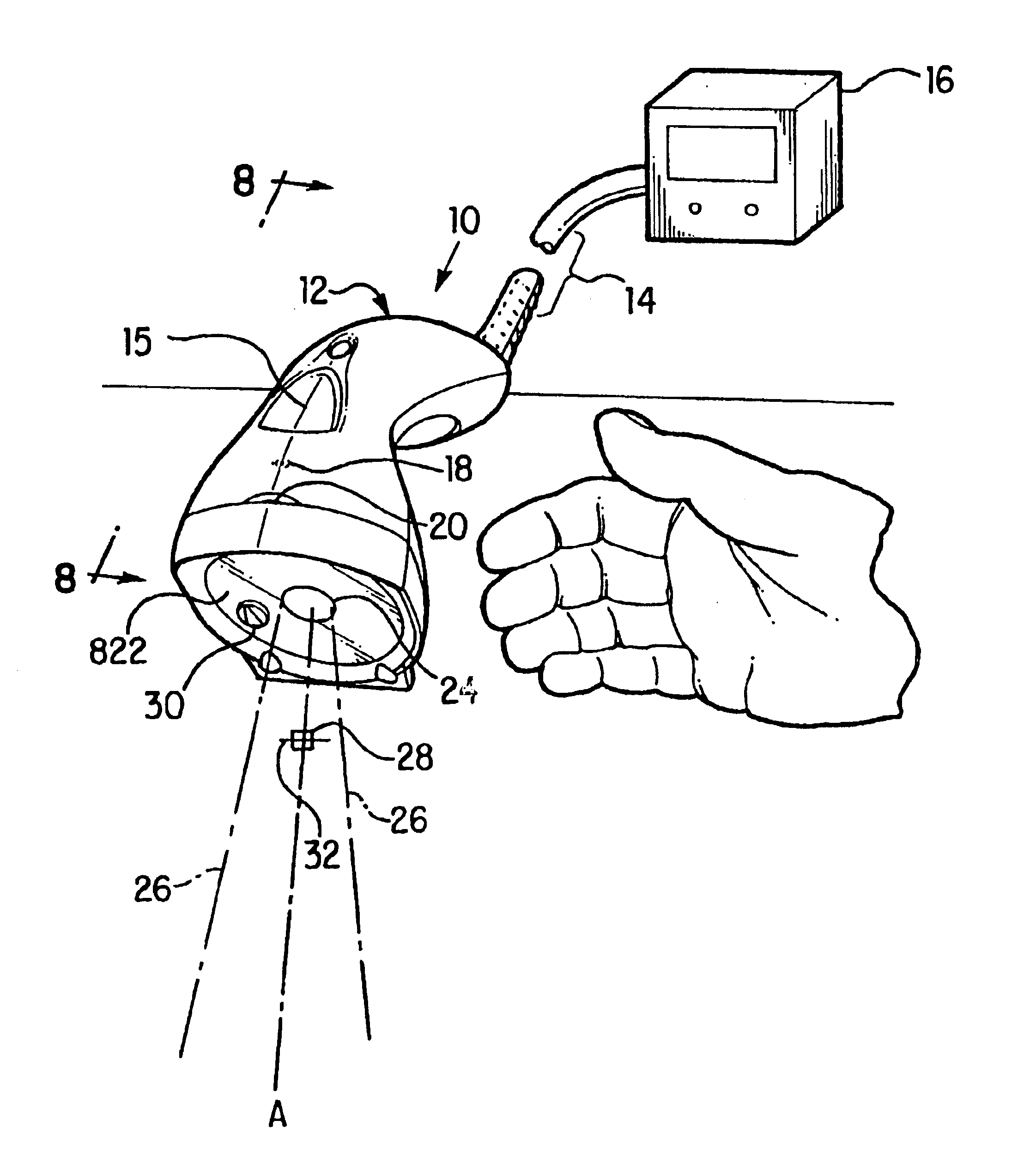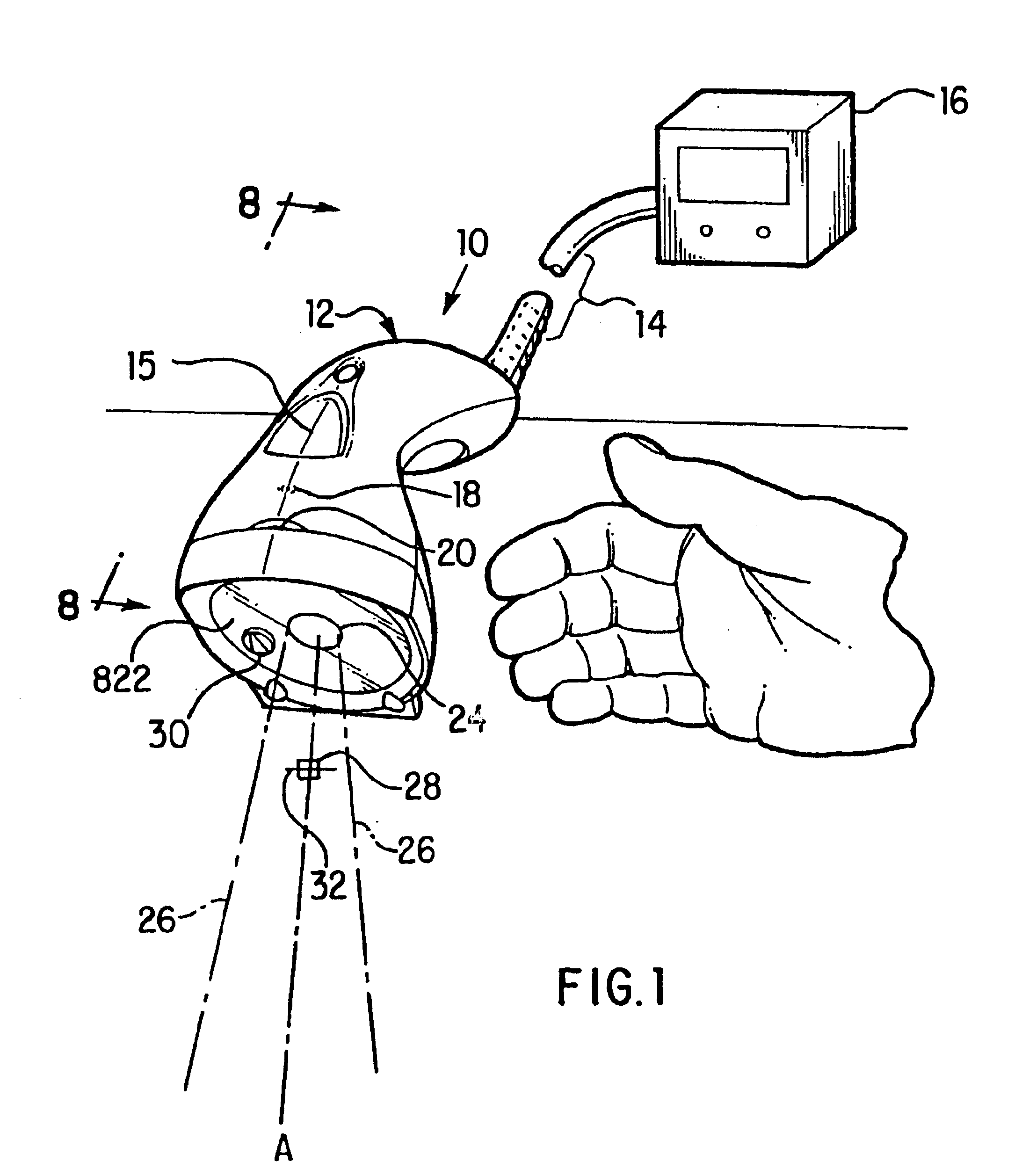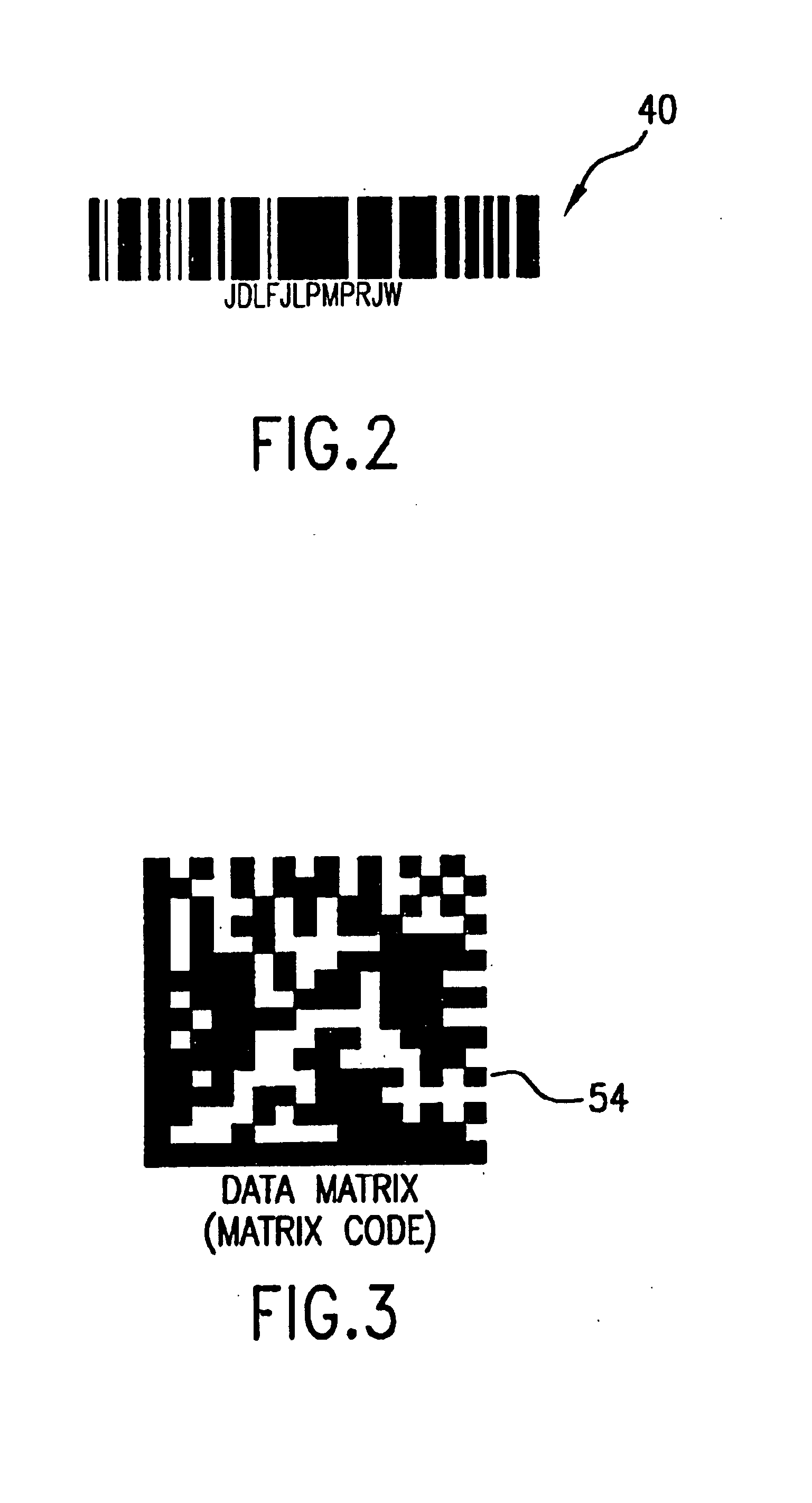Optical symbologies imager
a symbologie and optical technology, applied in the field of imagers, can solve the problems of inability to scan 2d symbologies, inability to accept imagers by end users, and inability to be commercially viable, and achieve the effect of eliminating variation in the position of imagers, achieving fast and accurate illumination and focusing steps, and eliminating the variation of imagers
- Summary
- Abstract
- Description
- Claims
- Application Information
AI Technical Summary
Benefits of technology
Problems solved by technology
Method used
Image
Examples
first embodiment
the focusing disk 94, shown in cross-section in FIG. 4, is shown in greater detail in FIG. 5a. The disk 94 has a series of different thickness optical positions 132. The thickness of the optical positions 132 is varied to focus the objective lens 92 onto the CCD detector 93 during image capture. The illustrated embodiment shows twelve optical positions 132 which thereby provide twelve potential focus ranges. A positional encoding strip 134 is provided on the disk 94 so that the position of the disk can be tracked. However, it is noted that the invention could operate with at least two optical positions.
Referring to FIGS. 5b and 5c, planar and cross-sectional views of a second embodiment of the focusing disk 94 is shown. The second embodiment has eight optical positions 132 and further includes an outer circumferential wall 136 which provides additional structural support.
The CCD detector 93 is utilized to determine which optical plate 132, and therefore which focusing zone, is appro...
PUM
 Login to View More
Login to View More Abstract
Description
Claims
Application Information
 Login to View More
Login to View More - R&D
- Intellectual Property
- Life Sciences
- Materials
- Tech Scout
- Unparalleled Data Quality
- Higher Quality Content
- 60% Fewer Hallucinations
Browse by: Latest US Patents, China's latest patents, Technical Efficacy Thesaurus, Application Domain, Technology Topic, Popular Technical Reports.
© 2025 PatSnap. All rights reserved.Legal|Privacy policy|Modern Slavery Act Transparency Statement|Sitemap|About US| Contact US: help@patsnap.com



